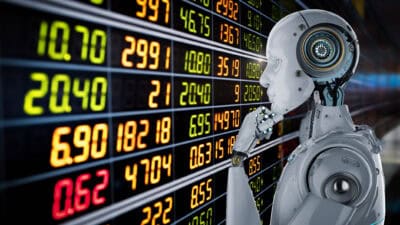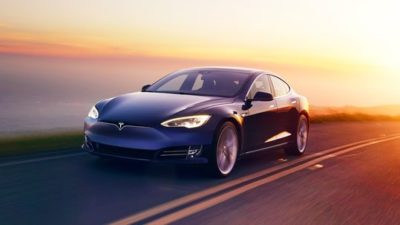This article was originally published on Fool.com. All figures quoted in US dollars unless otherwise stated.
Shares of Tesla (NASDAQ: TSLA) finally began trading on a split-adjusted basis Monday morning, completing a stock split that was announced on Aug. 11. The lower price represents a forward stock split in which shares split 5-for-1. Tesla stock opened the day trading at about $445 -- one-fifth of what the stock was trading at before the split.
If the electric-car maker's stock split has grabbed your attention and you're now taking a closer look at the growth stock, here's a quick overview of important factors investors should keep in mind.
A stock split doesn't make Tesla stock a better buy
First and foremost, investors should note that while Tesla shares are more affordable after the split, the split does not make the stock a more attractive investment than it was at its much higher pre-split price of $2,225.
Why is this the case? Simply because both price and ownership in the company on a per-share basis were divided by five. Put another way, each Tesla share is now assigned only one-fifth of the ownership in the company that was allotted previously.
On the flip side, of course, a stock split doesn't make Tesla stock any worse of an investment either. A stock split is simply a nonfactor when it comes to making investment decisions and should have no impact on an investment thesis.
Several key catalysts for Tesla stock
Nevertheless, some investors may be more interested in Tesla stock now simply because shares have become more affordable. Some retail investors could have been in a position in which it was more difficult to spend $2,225 on a single share. Or perhaps there are other investors who have coincidently become more interested in Tesla stock recently.
For those investors, let's take a quick look at the automaker and the catalysts that could help the stock over the long haul.
First, there's Tesla's recent launch of its Model Y. Debuting in March, the Model Y is Tesla's second-most affordable vehicle yet. With a starting price of about $50,000, the new vehicle gives the automaker a smaller SUV that is much more affordable than its larger Model X SUV. Model X pricing comparatively starts at $80,000. The automaker has big expectations for the Model Y, with management saying that it believes deliveries could eventually surpass those of the Model 3, which is Tesla's best-selling car by far. Specifically, Tesla CEO Elon Musk has said he believes annual Model Y deliveries could eventually grow to 1.25 million. With total Tesla vehicle deliveries estimated to come in at about 500,000 this year, the Model Y has the potential to be a huge catalyst for Tesla.
Second, there's Tesla's fast-growing energy business, which includes sales of energy storage and solar panels. While revenue from the segment only accounts for about 6% of total revenue today, Musk believes Tesla Energy will eventually rival its automotive business.
Finally, Tesla hopes its vehicle software will eventually bring in far more revenue for the company. Management has indicated two ways it plans to improve monetization of the software. First, it will continue raising the price for its driver-assist technology as it improves (the company believes the software will eventually get to the point where Tesla can release an over-the-air update that makes its vehicles self-driving, helping it command a much higher price tag). Second, Tesla plans to eventually launch a ride-sharing network that will operate with self-driving Tesla vehicles.
One key reason to avoid Tesla stock
Despite these exciting potential catalysts for Tesla stock, investors should keep in mind the automaker's pricey valuation. Today, Tesla has a market capitalization of $426 billion even though trailing-12-month sales and net income are just $25.7 billion and $368 million. This means that investors have already priced in a wildly optimistic growth story for the company over the next decade.
It's always possible, of course, that Tesla executes so well that even the rosy outlook priced into the stock today proves to be an underestimate of the company's potential. But investors should bear in mind the risks of the underperformance the stock could endure if investor expectations prove too optimistic.
This article was originally published on Fool.com. All figures quoted in US dollars unless otherwise stated.









